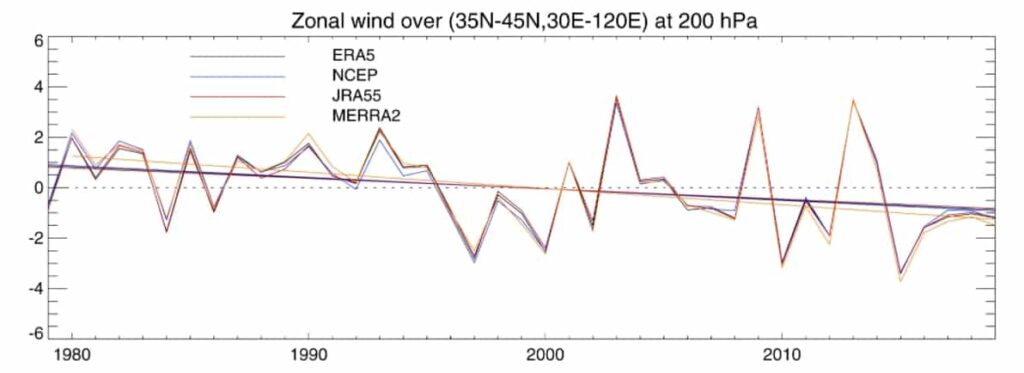Atmospheric concentrations of fine particles in Asia and Europe differ to the point of disturbing the summer thermal contrast between the north-west and the south-east of the Eurasian continent. However, this influence has very concrete implications, as shown by a study published on March 3 in the scientific journal Nature Communications .
Atmospheric circulation regimes favorable to prolonged heat and drought episodes have increased across the Old Continent and in Central Asia in recent decades. Thus, in addition to the background heating, the large-scale circulation intensifies the summer phenomena on these regions by concentrating the energy in the form of heat domes.
Atmospheric pollution and the weakening of the subtropical jet stream
A team of researchers from the University of Reading (England) found that this change in atmospheric circulation was not strongly linked, as previously assumed, to the decrease in the thermal contrast between the pole and the tropics. following the retreat of the Arctic ice. It would rather find its origin in the atmospheric concentrations of fine particles , also called aerosols, which differ greatly from one geographical area to another.

Greenhouse gases tends to reinforce this jet
Indeed, since 1979, fine particle pollution has clearly increased in southern and eastern Asia, while it has fallen sharply in Europe. However, this dust has the property of very effectively reflecting incident solar radiation, which has repercussions on the thermal contrasts on the scale of the continent. It is this mechanism which, according to the researchers, is the main factor responsible for the observed evolution.
By weakening the thermal differential between northwest and southeast Eurasia, anthropogenic aerosols weakened the subtropical jet stream by 7% between 1979 and 2019 . This implies more frequent and persistent blocking situations in the hot season, but also means that it is a fairly easily reversible development, in particular when taking into account the fact that the increase in greenhouse gases tends to reinforce this jet.
“ If Southeast Asian countries meet their commitments to reduce their air pollution levels over the next few decades, we would expect to see the jet stream strengthen again over Eurasia. , potentially reducing the likelihood of prolonged heat waves, but increasing the likelihood of severe mid-latitude storms ,” said Buwen Dong, lead author of the study.





